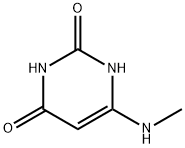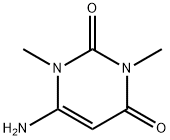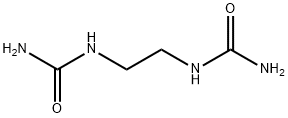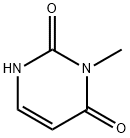BD4892841
1,3,7,9-Tetramethyl-1H-purine-2,6,8(3H,7H,9H)-trione , 97% , 2309-49-1
CAS NO.:2309-49-1
Empirical Formula: C9H12N4O3
Molecular Weight: 224.22
MDL number: MFCD00042781
EINECS: 218-994-1
| Pack Size | Price | Stock | Quantity |
| 250mg | RMB24.00 | In Stock |
|
| 1g | RMB43.20 | In Stock |
|
| 5g | RMB125.60 | In Stock |
|
| 25g | RMB428.00 | In Stock |
|
| others | Enquire |
Update time: 2022-07-08
PRODUCT Properties
| Melting point: | 226℃ |
| Boiling point: | 365.61°C (rough estimate) |
| Density | 1.3055 (rough estimate) |
| refractive index | 1.6300 (estimate) |
| storage temp. | Sealed in dry,Room Temperature |
| solubility | Chloroform (Slightly), Methanol (Slightly) |
| form | Solid |
| pka | -1.93±0.20(Predicted) |
| color | White to Off-White |
| Water Solubility | 33mg/L(room temperature) |
Description and Uses
Tetramethyluric acid is an impurity of caffeine. Caffeine is a bitter, white crystalline xanthine alkaloid that acts as a stimulant drug and a reversible acetylcholinesterase inhibitor. Caffeine is found in varying quantities in the seeds, leaves, and fruit of some plants, where it acts as a natural pesticide that paralyzes and kills certain insects feeding on the plants. In humans, caffeine acts as a central nervous system stimulant, temporarily warding off drowsiness and restoring alertness. Caffeine is a cardiac and respiratory stimulant; diuretic. Caffeine is toxic at sufficiently high doses.
Safety
| Symbol(GHS) |  GHS07 |
| Signal word | Warning |
| Hazard statements | H302-H315-H319-H335 |
| Precautionary statements | P261-P305+P351+P338 |






